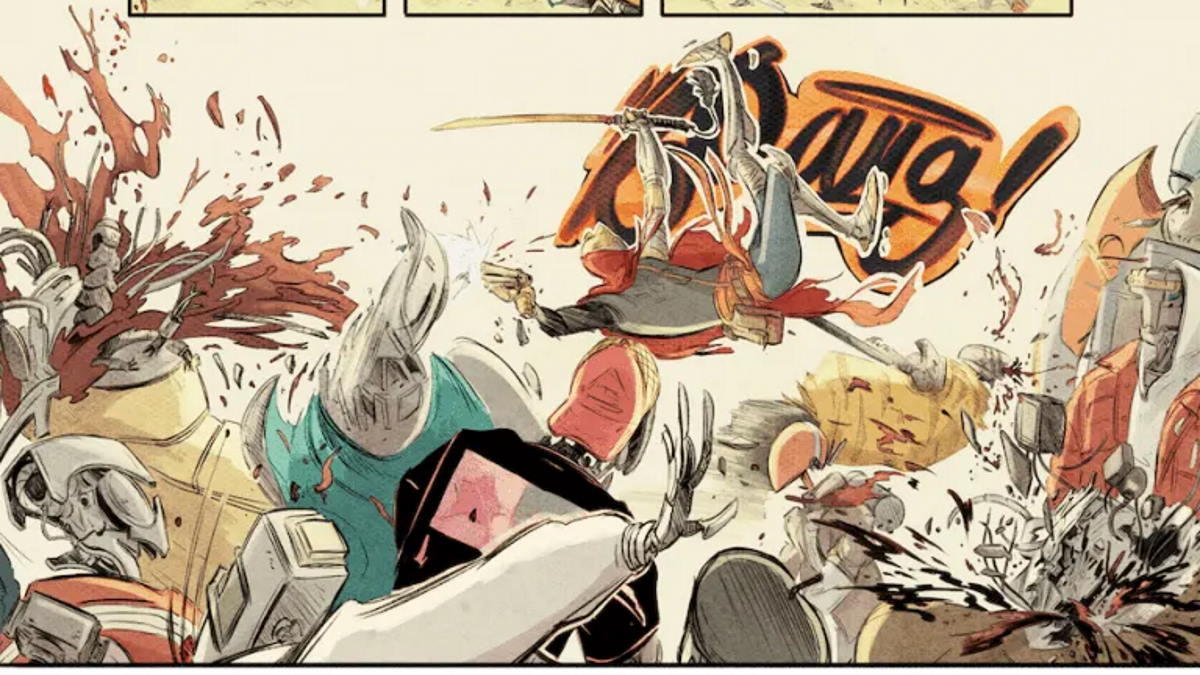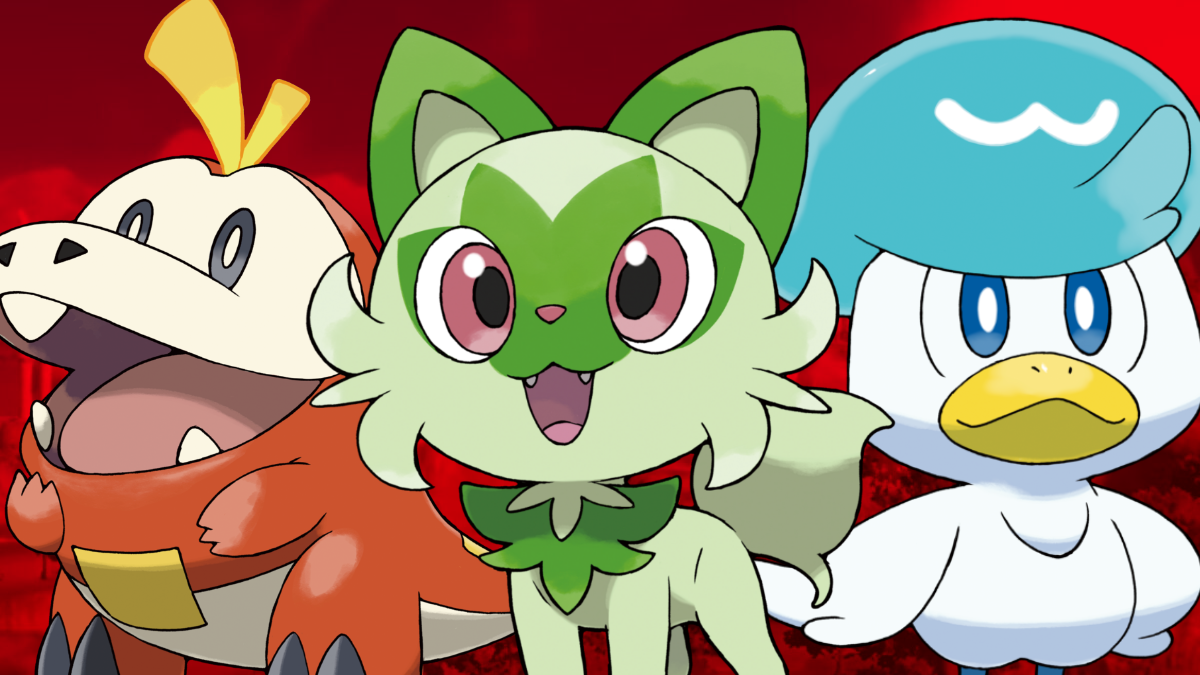Samurai Doggy #1 Review: Bold Style Carries a Thin Plot Toward Greater Potential
The wandering swordsman-adventure story is a popular genre, particularly with anime and manga fans, and stories featuring anthropomorphic animal characters have long been a staple of comic books. Stan Sakai's long-running Usagi Yojimbo stands as the reigning masterpiece of this blend of genres and remains a tough act to follow for any other who might venture in. Enter Samurai Doggy #1, the new Aftershock Comics series from Chris Tex and Santtos. Where Sakai crafts Usagi Yojimbo with masterful, simple, timeless cartooning, Samurai Doggy is a work of bold modern style, but possibly at the expense of narrative substance.
Samurai Doggy #1's opening pages may put some readers off immediately. The black-and-white-and-red flashback reveals Doggy's origin story. He's one in a litter of nine, and, while still nursing at his mother's teat, a mysterious figure attacks his family, slaying Doggy's mother and kidnapping his siblings. Doggy is left scarred and alone to die until a robot vulture finds him and nurses him back to health.

The scene provides the necessary motivation for Doggy's journeys but it goes overboard in depicting the violence of the attack. In an odd choice, this is the only scene in the story in which the otherwise anthropomorphized characters resemble realistic animals, and then only the victims. The choice amounts to it being several pages of the unnamed assailant brutalizing a puppy in an unnecessarily graphic fashion. There's a truism that less is more, but here, more is less proves true.
Those that make it through this prologue will find the remainder of the issue is much brighter and lighter. The introduction of the robotic bird at the end of the prologue feels like too much at first but makes more sense as the story eases readers into Samurai Doggy's world, which blends samurai fiction tropes with sci-fi concepts such as sentient robots with the carefree ease of Star Wars. The soft, naturalist coloring and light blue sky add to the atmosphere, emphasizing how the beauty of nature (a common samurai motif) persists even into the post-apocalypse. The palette is reminiscent of Tekkonkinkreet's contrast of blue sky against exaggerated urban sprawl.
Santtos draws all of this with bold, thick linework. Doggy has an eye-catching design, with his red half-cape drawing the eyes and serving as a clear, recognizable signature. He's tall and lumbering, but Santtos' use of motion lines implies a remarkable sense of speed. Santtos' graffiti-like lettering is in stark contrast to his more nuanced and watery background work. Throughout the issue, he employs a variety of layouts, often relying on asymmetrical panel stacking, overlap, and an abundance of negative gutter space to keep readers on their toes, making the page-turns into two-page splashes that much more impactful.
Action is vital to most samurai stories, and some of Santtos' efforts are more successful than others. The weaker ones struggle with momentum, making odd choices regarding which moments to capture in each panel. The more successful ones lean into the issue's boldness, emphasizing impact and powerful movements by the participants.
The plot that carries this along is thin and built primarily upon cliches. Doggy is out looking for information, visits a market, bumps into a kid who picks his pocket, and gets roped into helping the locals deal with some thugs. It's typical stuff, and the dialogue isn't particularly memorable, but the script does find room for nice touches, such as Doggy being momentarily distracted by the local cuisine.
Otherwise, the plot is barely there, mostly pushing Doggy from one panel to the next and allowing Santtos to do his thing, which he mostly does well. Overlooking the opening pages of the issue, brutal as they are, readers' enjoyment of Samurai Doggy will likely come down to how much they appreciate the visuals, and there is a lot to like in that regard. In that way, it's reminiscent of another anthropomorphic comic series, Blacksad, a series with capably written plots elevated by gorgeous artwork. That may sound like a backhanded compliment, but there are far worse things in the world than a comic book being remembered best for being visually stunning.
Published by Aftershock Comics
On August 10, 2022
Written by Chris Tex
Art by Santtos
Colors by Santtos
Letters by Santtos
Cover by Santtos




